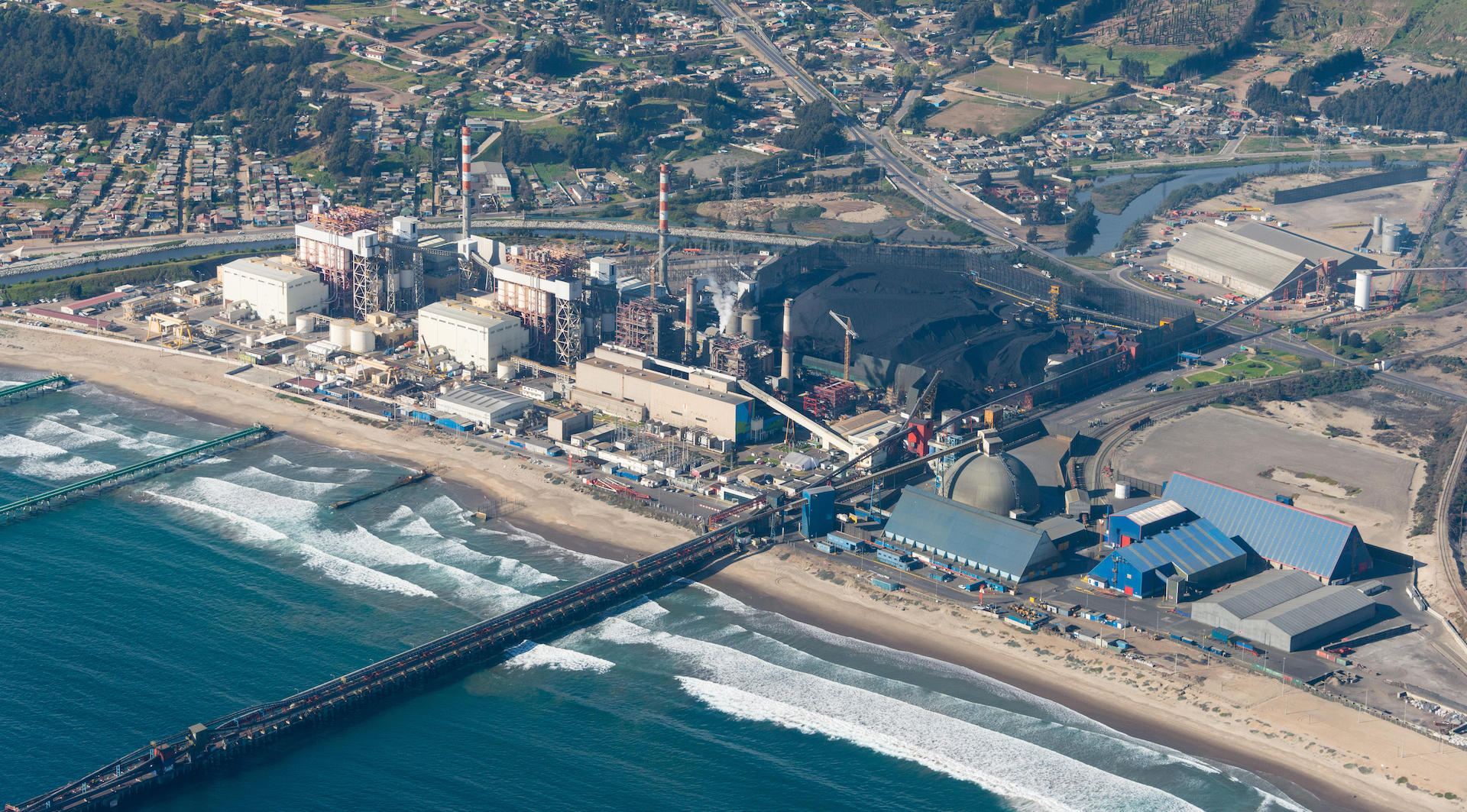By 2050 Chile plans to be carbon neutral. A crucial part of that goal is the decarbonisation of its energy mix. To do this, all coal-fired power plants will stop operating by 2040.
To deliver maximum benefit, two additional challenges must be met: replacing Chile’s energy currently produced by coal; and finding a use for the 30 plants that will be closed.
So what else could they be used for? Several options are being considered by the government and companies. They include their conversion to biomass or biogas, into desalination plants, or to house the development of new technologies such as Carnot batteries.
The latter store the thermal energy generated by heating salts. Therefore, a large part of the existing installed infrastructure can be used for the generation of electricity. Although this is an advantageous option, there are still many challenges.
Chile’s coal cuts
Currently, Chile has an installed power generation capacity of 24,886mw. Up until November 2020, coal-fired plants were responsible for almost 18%, the main source of energy generation, followed by diesel oil and natural gas, each with a share of around 15%.
Therefore, the government’s plan to cease operations of 11 coal-fired plants (30%) by 2024, and the rest before 2040, involves a major review of the country’s energy sector.
30%
of Chile's coal-fired power stations will close by 2024
With the introduction of more renewable energies, it is expected that a decade before Chile’s carbon neutrality goal is met, emissions from the electricity sector will reach 4 million tons of CO2 equivalent per year, instead of the projected 30 million in the absence of plans to decarbonise.
One of the complexities of shutting down coal-fired plants is what to do with them next. This is not just a problem in Chile, but globally. In Germany, a country that also has a plan to phase out these plants, a pilot project is being carried out in North Rhine-Westphalia that might work in the South American country.
The proposal envisages the conversion of coal-fired plants into thermal storage plants. “The idea is to replace the fossil fuel boiler with molten salt ponds,” said Rodrigo Vásquez, advisor to the Renewable Energies and Energy Efficiency Program at the German Society for International Cooperation (GIZ) in Chile. The salts are melted at up to 565C, and are later used to generate steam, move a turbine and generate energy.
Unlike Cerro Dominador, the largest solar thermal plant in Chile, which heats its salts directly with solar radiation, the converted coal-fired plants would use electrical heating elements fed with renewable energy to increase the temperature of the salts, Vásquez added.
This technology would not only allow the use of all renewable energy, but also solve another problem. Energies such as solar and wind are not constant, so they have to be stored. With a growing share in the energy matrix, it is urgent to find solutions for storage. In the next two years, solar energy is expected to increase from 10% to 15%.
“As these fluctuate all the time (due to the lack of light or wind) a means is necessary to stabilise this generation and compensate for the variations,” explained Álvaro Lorca, a researcher in electrical engineering at the Pontificia Universidad Católica de Chile.
Carnot batteries could be a technology to solve that. However, it is first necessary to determine their cost structure, among other things, to see if they are a viable option, he adds.
The economic and cultural dependence of the people who live nearby must also be considered
According to a report delivered to the Chilean government last year by GIZ and the German Aerospace Agency, which simulated the transformation of real plants installed in Chile, the reconverted thermoelectric plants would have a generation cost that would range between US$80 and US$100 per megawatt/hour (mwh). Although this exceeds the generation of traditional coal-fired plants (with a cost of between US$63 and $76 per mwh) and gas-fired (between US$65 and $91 per mwh), it would still be feasible to start field tests.
“In order to evaluate whether or not a power plant will be converted, it is necessary to consider both social, technical and economic aspects, among which are the investment, labor and efficiency of Carnot batteries, which will allow companies to take the most appropriate solution sustainable for the territory,” said Nicolás Westenenk, director of environment and climate change at Generadoras de Chile, an energy industry association.
But Carnot batteries are not the only technology under evaluation. Along with the possibility of converting the plants to biomass are combined cycle natural gas installations, which would them more efficient and emit lower levels of greenhouse gasses. Another alternative would be to keep the assets, but incorporate carbon capture and storage systems.
There is also the option of converting coal infrastructure to the co-generation and production of hydrogen, from the gasification of pulverised coal. The downside of this technology is that it would generate CO2, so it would also require emissions capture systems, making it more expensive, Westenenk said. Other alternatives are the conversion to waste incineration plants, or the complete dismantling for the conversion of the land to other uses.
Carnot batteries still under development
Vásquez recognises that Carnot battery technology still has several challenges ahead and that this could make attracting financing from banks more complicated.
But there can also be social obstacles. “Although the conversion transforms thermoelectric plants into renewable plants and stops emitting smoke, their chimneys can continue to cause offence,” said the expert. Therefore, any transformation should be accompanied by territorial management and be fair for local residents.
For Felipe Pino, a lawyer for the Chilean NGO FIMA, and part of the coordination of the Just Transition Project in Latin America (TJLA), there must be compensation to communities in Chile where the coal-fired plants are located due to the extraction time and polluting emissions.
“The economic and cultural dependence of the people who live nearby must also be considered and how the change or closure may impact them,” he adds.
Integration into the electricity system’s regulatory framework is another major consideration for the decarbonisation process if old coal-fired power station are to have new life breathed into them: “With the regulation that we have today, this transformation would not be possible,” Álvaro Lorca said.








